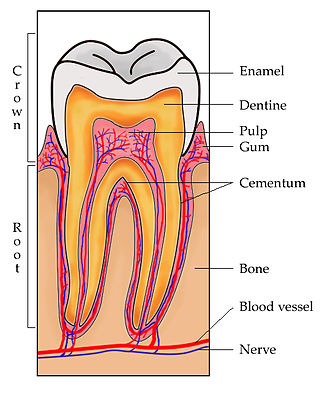AY Honors/Digestion/Answer Key
Skill Level 2
1. Have the Nutrition Honor.
The answers for the Nutrition honor can be found in the Household Arts chapter of this book.
2. Keep a record of what and how much food you eat for two weeks. Compare your diet to that of the food pyramid.
If you have access to the Internet, you can visit the USDA's MyPyramidTracker.gov web site, the official home of the Food Pyramid. Once you register, you can enter all the foods you eat in a day, and it will analyze your nutrient intake (among other things) based on this information. MyPyramidTracker can retain the information you enter for up to a year, so tracking it for a week will be easy.
If your Pathfinders do not have access to the Internet, have them record their diets on paper. You can then use the website to extract the necessary data by entering each food individually, or you can find a cookbook that has nutrient values of various foods in an appendix. Another option would be to meet in a place that has public Internet access, such as a library or Internet cafe. Then your Pathfinders can enter the data they have collected for a week and analyze it there.
The values in the table below are for children who are physically active for 60 minutes or more per day. Use the USDA website for adults and less active children.
| Food Group | Grains | Vegetables | Fruits | Milk | Meat & Beans |
| 10 year-old Male | 7 oz | 3 cups | 2 cups | 3 cups | 6 ounces |
|---|---|---|---|---|---|
| 10 year-old Female | 6 oz | 2.5 cups | 2 cups | 3 cups | 5.5 ounces |
| 11 year-old Male | 7 oz | 3 cups | 2 cups | 3 cups | 6 ounces |
| 11 year-old Female | 6 oz | 2.5 cups | 2 cups | 3 cups | 5.5 ounces |
| 12 year-old Male | 8 oz | 3 cups | 2 cups | 3 cups | 6.5 ounces |
| 12 year-old Female | 7 oz | 3 cups | 2 cups | 3 cups | 6 ounces |
| 13 year-old Male | 9 oz | 3.5 cups | 2 cups | 3 cups | 6.5 ounces |
| 13 year-old Female | 7 oz | 3 cups | 2 cups | 3 cups | 6 ounces |
| 14 year-old Male | 10 oz | 3.5 cups | 2.5 cups | 3 cups | 7 ounces |
| 14 year-old Female | 8 oz | 3 cups | 2 cups | 3 cups | 6.5 ounces |
| 15 year-old Male | 10 oz | 5 cups | 2.5 cups | 3 cups | 7 ounces |
| 15 year-old Female | 8 oz | 3 cups | 2 cups | 3 cups | 6.5 ounces |
3. What is digestion? What is another name for the human digestive system?
Digestion is the conversion of food into substances that can be absorbed by the body. Another name for the human digestive system is the gastrointestinal tract, or just the GI tract for short.
4. Where does saliva come from? What are the three functions of saliva?
Saliva, often informally known as spit, is the moist, clear, and usually somewhat frothy substance produced in the mouth. Saliva is produced in and secreted from the salivary glands.
- Saliva moistens food so it can be swallowed easily.
- Saliva contains an enzyme that breaks some starches down into maltose and dextrin.
- Saliva protects teeth from decay by plaque. Saliva is used to neutralize acids made from sugars in the mouth, therefore helping to prevent demineralization. Remineralization is when saliva helps repair the damaged crystals of the tooth enamel.
5. Be able to identify the following parts of the tooth. What role do the teeth play in digestion?
The primary function of teeth is to tear and chew food, reducing it into smaller pieces. This is the first step in the digestive process.
Enamel
Enamel is the outside covering of the exposed portion of a tooth. It is the hardest substance that is part of the human body.
Dentin
Dentin (also called Dentine) is the substance between the enamel (substance in the crown) or cementum (substance in the root) of a tooth and the pulp chamber.
Pulp
The dental pulp is the part in the center of a tooth made up of living soft tissue.
Gum
The gums consist of the tissue surrounding the roots of the teeth and covering the jawbone.
Cementum
Cementum is a specialized bony substance covering the root of a tooth.
Periodontal membrane
The periodontal membrane is the tissue between the tooth and the tooth socket. It holds the tooth in place.

